PC80 - The Electric Heron
by Patrick Harlow
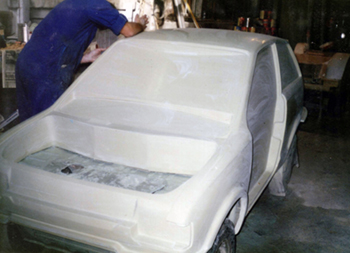
Chris Cooke working on the plug. 
Prototype under construction. 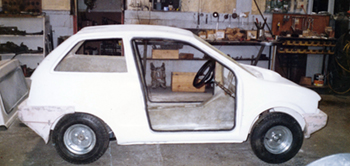
|
One of the major distractions that stalled the progress of Ross’ MJ 2+2 was the fact that they had started work on another possible production car, and this one did have a major sponsor. Heron Developments started development on a unique electric car called the PC80. One electric company, Power Co, Wanganui, was a little more serious about the future than others. In 1997, the Wanganui based company approached Ross Baker and asked him to design and build a small electric road legal car. This was the sort of challenge that Ross lived for. Initially, he believed that after the construction of a working prototype Powerco would commission several cars to be built and used by its service personnel in Wanganui. Once the public saw these cars being used as everyday vehicles it was hoped that public acceptance would be gained, and people would see them as a car that could be used every day for city driving. As it was intended for mass production a lot of thought went into its design. Like the Heron MJ1, it would have a fibreglass monocoque construction. Being a city car, it would only have two doors but seat four passengers with a useful hatchback for holding the shopping. It was similar in size to the Holden Barina, but unlike the Barina –that weighed 900kg - it weighed in at only 650kgs with batteries. At $22,000 it was more expensive than the Barina, but huge savings would be made in the cost of running it. In those days Ross believed it would be less than a third of the cost of running the petrol alternative. |
|
The construction of the car was a fibreglass monocoque, very similar to the MJ1 cars, with the top and bottom moulds glued together with a tunnel and two sills. The car was designed to have a range of between 40 and 80 kilometres, depending on the terrain, at an average speed of 80 km/h. Its maximum speed was just over 100kmh. At slower speeds, such as around town, the range would naturally increase. As the majority of New Zealanders have a commute to work each day of fewer than 20 kilometres each way, Ross did not believe the range would be a significant problem. If the commute was over 40 kilometres then 3 hours would see the batteries recharged ready to make the journey home. The PC80 was never intended to be the principal family car, instead, it would be the second car, a small runabout that seldom left the city. The letters “PC” stood for Power Co, the power company who commissioned the car. So why did it not take off? By the end of 1995, two prototypes had been made and were undergoing testing by Powerco. Ross was getting ready to go into mass production. As with the MJ1, Ross did not have the capital to promote the car himself. With Powerco paying for all the development and tooling up costs, and, prepared to order a fleet of cars, Ross would have had the necessary capital to turn his attention to the rest of New Zealand. But it was not to be. Power Co decided to merge with the New Plymouth Power Company and the new company was not prepared to pursue the electric car project any further. Only two cars were produced. The first car that Ross used as his own runabout is now owned by MOTAT and in the process of being restored. |
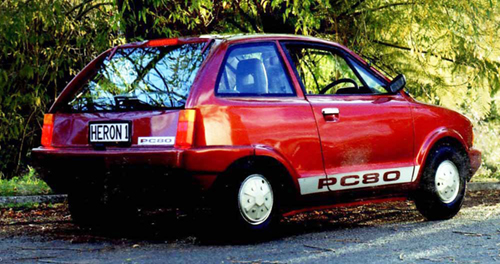
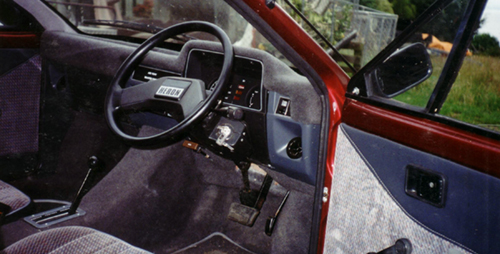
|
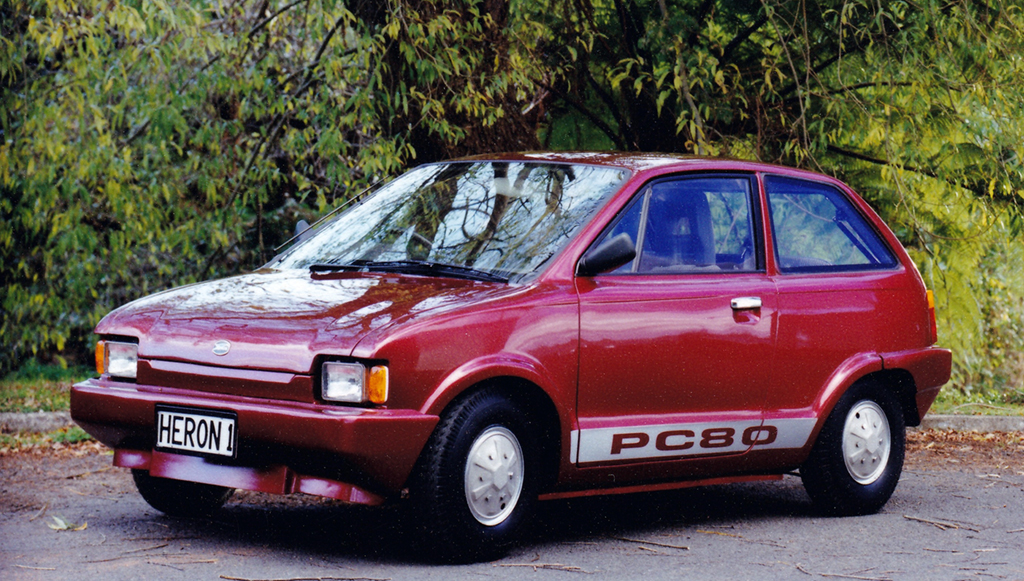
The PC80 was the only electric Heron car, although Heron did build about 30 electric industrial trucks and about 50 golf carts.









